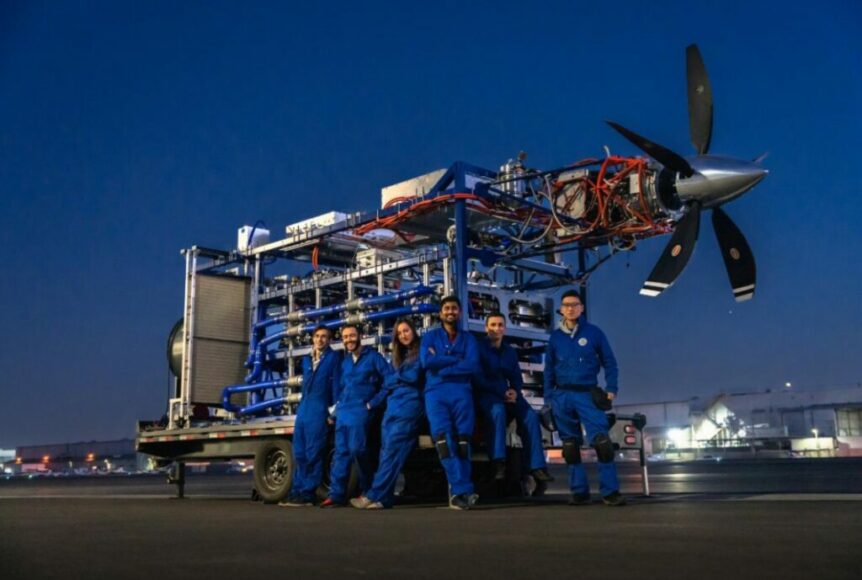In an “end-to-end” demonstration of its proprietary liquid hydrogen module, Universal Hydrogen Co. has successfully run a megawatt-class fuel cell powertrain. “End-to-End,” in this case means “[the] demonstration of a hydrogen molecule moving from our filler/dispenser into our storage module and then into our powertrain is the first time that all the pieces of our product portfolio for regional aviation have come together,” said Paul Eremenko, co-founder and CEO of Universal Hydrogen. “The next step is to upgrade our flight testbed to fly the powertrain fueled by our modules.” In a simplified interface for a complex process, the liquid hydrogen module “is the core of the company’s fuel services offering for aviation.” Looking like any other intermodal freight and airport cargo handling equipment, each module contains 200 kilograms (440 pounds) of liquid hydrogen. Capable of storing it for long periods without boiloff, the module’s internal systems convert the cryogenic H2 into a warm gaseous H2 consumed by the powertrain Designed …
Additive Manufacturing for Electric Motors
United Technologies Research Center (UTRC) is working with the Advanced Research Projects Agency – Energy (ARPA-E) on the “Additive Manufacturing of Optimized Ultra-High Efficiency Electric Machines,” or making motors through 3-D printing with metals, possibly obviating the need for rare-earth elements. The $2.7 million ARPA-E award will fund the East Hartford, Connecticut-based project through early 2016 and may lead toward the goal of creating lower-cost, more efficient motors. Because modern permanent magnet motors require rare earth minerals in their magnets for maximum performance, manufacturers must make optimum use of these minerals with minimum waste to be successful. Because these minerals do not exist in large quantities in North America, makers must import a great many of them from Asia, where certain key players maintain control over their distribution. ARPA-E explains the “workaround” possible through improved manufacturing techniques. “Rare earths are naturally occurring minerals with unique magnetic properties that are used in electric vehicle (EV) motors and wind generators. Because these …

